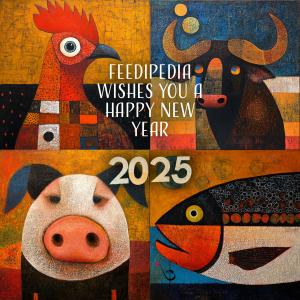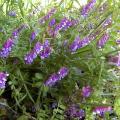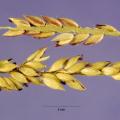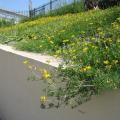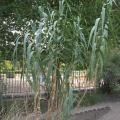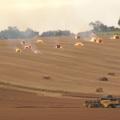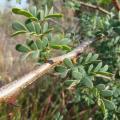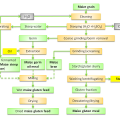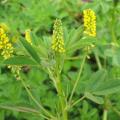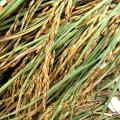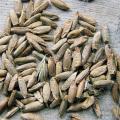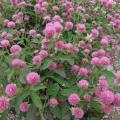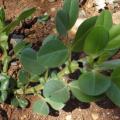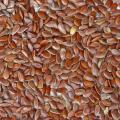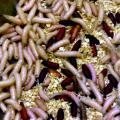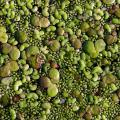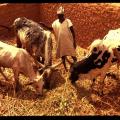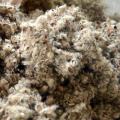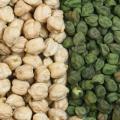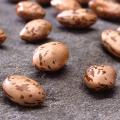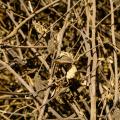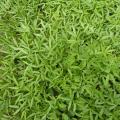Explore Feedipedia
|
Hairy vetch (Vicia villosa Roth) is an annual or biannual viny legume with a... Read more |
Carib grass (Eriochloa polystachya H.B.K.) is valuable pasture grass native to... Read more |
Birdsfoot trefoil (Lotus corniculatus L.) is a legume mainly grown for fodder... Read more |
|
The giant reed (Arundo donax L.) is a very tall herbaceous grass, common and... Read more |
Flax (Linum usitatissimum L.) is grown for its oil or its fibre, depending on... Read more |
The black thorn (Acacia mellifera (M. Vahl) Benth.) is an African shrub or small... Read more |
|
Maize germ meal (corn germ meal) is the by-product of oil extraction from maize germs... Read more |
Sour clover (Melilotus indicus (L.) All.) is an erect annual forage legume, up... Read more |
Rough rice, also called paddy rice, is the whole rice grain with the hulls (about 20% of... Read more |
|
Rye (Secale cereale L.) is a winter-hardy annual or biennial grass. It is mostly... Read more |
The red clover (Trifolium pratense L.) is a short-lived perennial (2-4 years)... Read more |
The Narbon vetch (Vicia narbonensis L.) is an annual legume with thick, angular... Read more |
|
Linseeds are the seeds of the flax plant (Linum usitatissimum L.). Flax is grown... Read more |
The housefly (Musca domestica Linnaeus 1758) is the most common fly (Diptera)... Read more |
Duckweeds are tiny free-floating vascular plants found throughout the world on fresh (or... Read more |
|
The cowpea (Vigna unguiculata (L.) Walp.) is an annual herbaceous legume... Read more |
Cottonseed hulls are the outer coverings of cotton seeds, and the by-products of the... Read more |
The chickpea (Cicer arietinum L.) is a major grain legume cultivated for its... Read more |
|
The common bean (Phaseolus vulgaris L.) is a major grain legume consumed... Read more |
The cotton harvest leaves several residues in the field, such as stalks, side branches,... Read more |
The Caribbean stylo (Stylosanthes hamata (L.)Taub.) is a semi-erect, annual or... Read more |
Pages
Recent resources
 Opinion paper: Phasing out of the aid provided to the livestock sector during expectedly recurrent emergencies
- Makkar, 2024. animal
Opinion paper: Phasing out of the aid provided to the livestock sector during expectedly recurrent emergencies
- Makkar, 2024. animal
Open access opinion paper that makes a case that the emergency aid do more harm than good to African countries. It is valid for all the fields of agriculture but has direct consequence for animal agriculture. The context here is the aid provided during emergencies that are foreseeable recurrent.
The role of livestock in food security, poverty reduction and wealth creation in West Africa
- Molina-Flores et al., 2020. Food and Agriculture Organization of the United Nations Accra, 2020
Livestock is key to 377 million people in West Africa and in some countries, up to 60% of the population is involved in livestock production. The demand for animal products is increasing with population growth, urbanization, growing middle class, and due to shifting consumer preferences towards animal products. To meet this growing demand, countries in West Africa must engage in accelerated sustainable livestock production undertaking. Livestock development is key to eradicate hunger and poverty. This book attempts to provide up-to-date, and reliable information on the potentials, opportunities, and challenges of the livestock subsector in West Africa.
Pulses and their by-products as animal feed
- Sherasia et al., 2017. In: Calles, T.; Makkar, H. P. S. (Eds), FAO, Food and Agriculture Organization of the United Nations, Rome, Italy
This document provides a state-of-the-art review of the recent research (published and unpublished) on the use of pulses and their by-products as animal feed. It aims at raising awareness on the use of pulses and their by-products. It highlights the nutritional role of pulses and pulse by-products as animal feed and is a contribution to the legacy of the 2016 International Year of Pulses. This document will further enhance the use of these feed resources in other continents, besides Asia, where many pulse by-products are simply dumped. It is also expected that the synthesis presented contributes to make the use of pulses and their by-products as animal feed more efficient. This document will be useful for extension workers, researchers, feed industry, policy-makers and donors alike.








